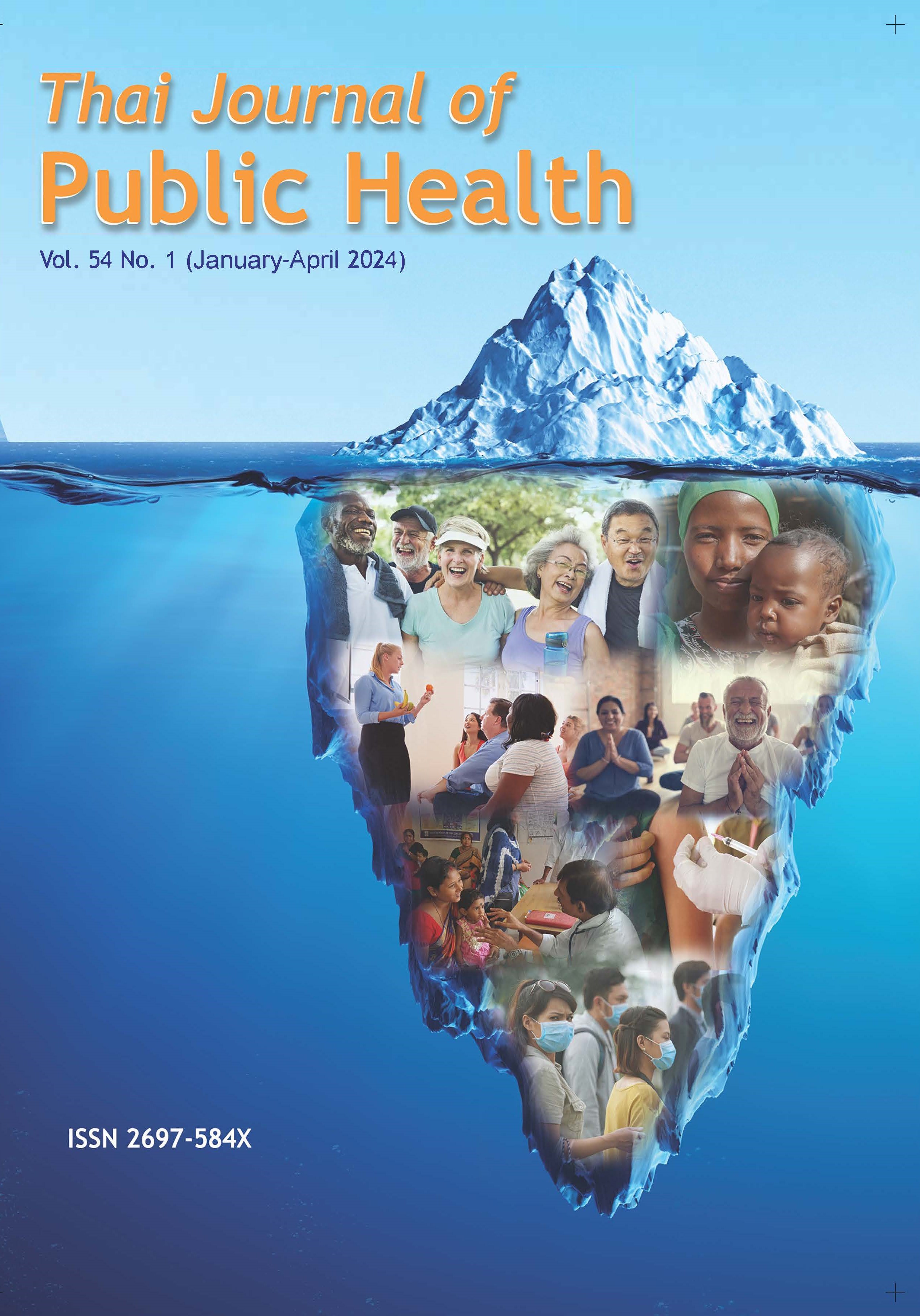Association between Oral Health Promoting School Activities and Oral Health Literacy, Oral Health Behavior and Oral Health Outcome
Keywords:
Oral health promotion, Oral health in school, Oral health literacy, Oral health evaluation, Oral health promoting schoolAbstract
Bureau of dental health had implemented oral health promoting school program since 2008, activities cover; 1) build supportive oral health policy 2) improve children oral health skills 3) create supportive environment 4) set an oral health surveillance system and 5) engage of all stakeholders. This study aimed to find the association between the oral health promoting school activities and oral health literacy (OHL), oral health behavior and oral health status among school children.
This study was conducted in 3,671 primary-school-children grade 5-6 from 70 schools. Sampling was done by using the stratified two-stages sampling technique. Data were drawn from 1) school oral health activities questionnaires, 2) OHL questionnaires, and 3) oral health behavior questionnaires. Caries experience (DMF) of the children was derived from the Ministry of Public Health’s database. The Chi–square test and Logistic regression analysis were used in data analysis.
The result showed that the average mean of OHL among children was 21.6 (Adequate OHL= 21). Only 10.0% of Children brushed their teeth followed the key messages 222 (brush twice daily, at least 2 minutes and avoid eating 2 hrs. after brushed). Moreover, 10.5%, 14.9%, and 28.6% of children consumed carbonated soft drinks, sugary drinks, and snacks more than 2 times per day, respectively. A statistically significant association between schools implemented oral health activities and oral health literacy (p < 0.001), oral health behavior (p < 0.05), and oral health status (p < 0.05) were observed. Oral health promoting school should be scaled up as they related to good oral health behavior.
References
World Health Organization. WHO’s global school health initiative. Geneva, Switzerland: World Health Organization; 1998. Available from: https://www.who.int/publications-detail-redirect/global-school-health-initiatives-achieving-health-and-education-outcomes, accessed: 24 October, 2022.
Pinpinut W, Piyada P. Development and validation of an oral health literacy measurement for primary school children in Thailand. International Journal of Dentistry 2022; DOI: 10.1155/2022/9161619. Available from: https://www.ncbi.nlm.nih.gov/pmc/articles/PMC8920617/pdf/IJD2022-9161619.pdf, accessed: 2 April, 2023.
Bureau of Dental Health, Department of Health, Thailand. The 8th National Oral Health Survey 2017. Nonthaburi, Thailand: Department of health; 2017. Available from: https://dental.anamai.moph.go.th/th/national-oral-health-survey-report/3441#wow-book/, accessed: 2 April, 2023. (In Thai)
Freeman R, Oliver M. Do school break-time policies influence child dental health and snacking behaviours? An evaluation of a primary school programme. British Dental Journal 2009; 206(12): 619-25. DOI: 10.1038/sj.bdj.2009.518
Bere E, Veierod MB, Klepp KI. The Norwegian school fruit programme: evaluating paid vs. no-cost subscriptions. Prev Med 2005; 41(2): 463-70. DOI: 10.1016/j.ypmed.2004.11.024
Moyses ST, Moyses SJ, Watt RG, Sheiham A. Associations between health promoting schools’policies and indicators of oral health in Brazil. Health Promotion International 2003; 18(3): 209-18. DOI: 10.1093/heapro/dag016
Stella Y.L. Kwan, Poul Erik Petersen, Cynthia M. Pine, & Annerose Borutta. Health-promoting schools: an opportunity for oral health promotion. Bulletin of the World Health Organization 2005; 83(9): 677-85.
Watt R, Fuller Sc. Oral health promotion evaluation –time for development. Community Dentistry and Oral Epidemiology 2001; 29(3): 161-66. DOI: 10.1034/j.1600-0528.2001.290301.x
Reinhardt CH, Lopker N, Noack MJ, Klein K, Rosen E. Peer tutoring pilot program for the improvement of oral health behavior in underprivileged and immigrant children. Pediatric Dentistry 2009; 31(7): 481-5.
Freeman R, Bunting G. A child-to-child approach to promoting healthier snacking in primary school children: a randomised trial in Northern Ireland. Health Education 2003; 103(1): 17-27. DOI: 10.1108/09654280310459121
Chapman A, Copestake SJ, Duncan K. An oral health education programme based on the National Curriculum. International Journal of Paediatric Dentistry 2006; 16(1): 40-4. DOI: 10.1111/j.1365-263X.2006.00677.x
Jackson RJ, Newman HN, Smart GJ et al. The effects of a supervised toothbrushing programme on the caries increment of primary school children, initially aged 5-6 years. Caries Research 2005; 39(2): 108-15. DOI: 10.1159/000083155
de Silva AM, Hegde S, Akudo Nwagbara B et al. Community‐based population‐level interventions for promoting child oral health. Cochrane Database Syst Rev 2016; (12): CD009837. DOI: 10.1002/14651858.CD009837.pub2
Saied-Moallemi Z, Virtanen JI, Vehkalahti MM, Tehranchi A, Murtomaa H. School-based intervention to promote preadolescents’ gingival health: a community trial. Community Dentistry and Oral Epidemiology 2009; 37(6): 518-26. DOI: 10.1111/j.1600-0528.2009.00491.x
Victorian Department of Health. 2010. “Getting children aged 5 to 12 years to eat more fruit and vegetables: An evidence summary.” Melbourne, Victorian Department of Health. Available from: https://www.deakin.edu.au/__data/assets/pdf_file/0011/276266/Dept-Health_EatMoreFruitVeg_5To12Years.pdf, accessed: 2 April, 2023.
Downloads
Published
Issue
Section
License

This work is licensed under a Creative Commons Attribution-NonCommercial-NoDerivatives 4.0 International License.
Creative Commons License CC-BY-ND


